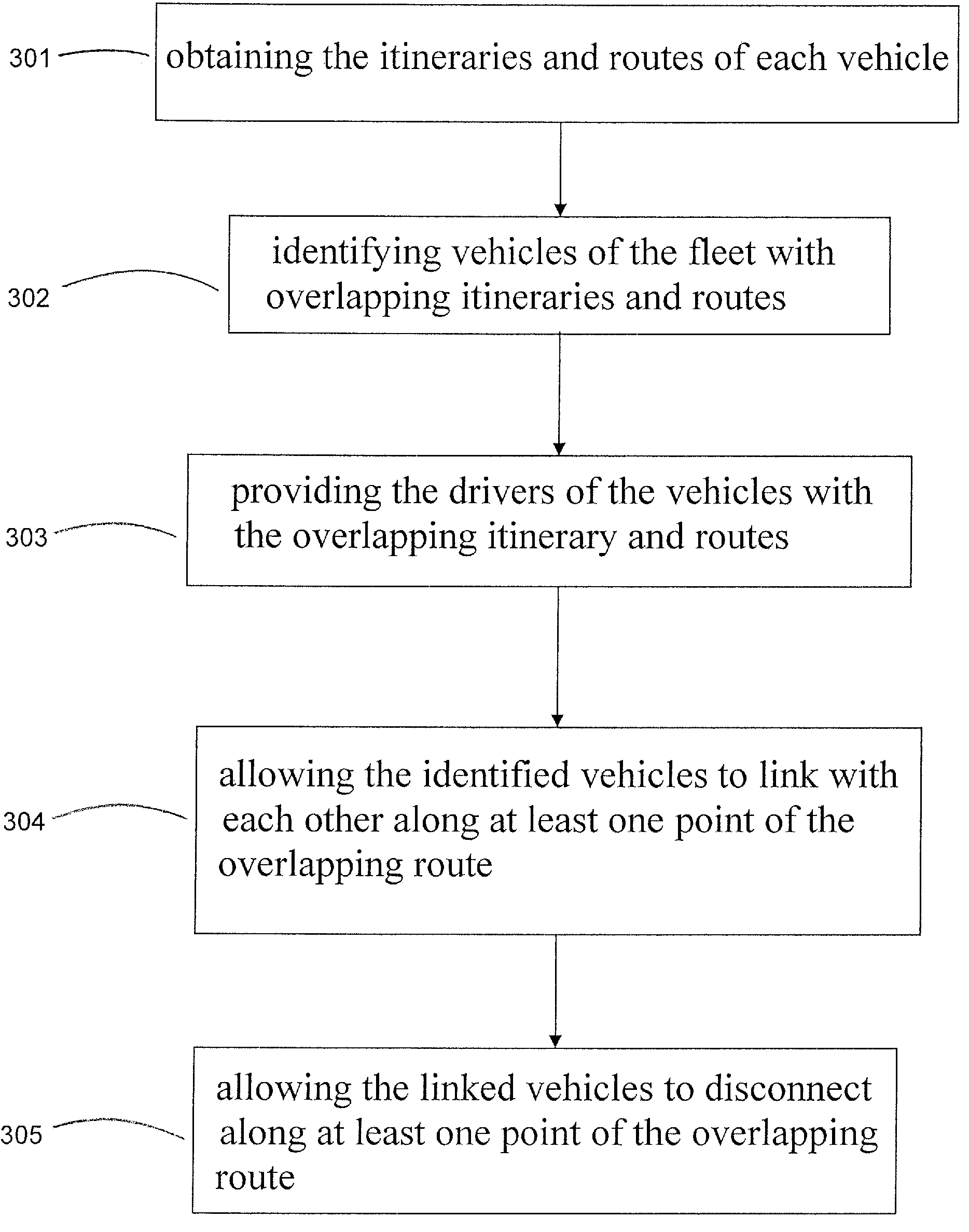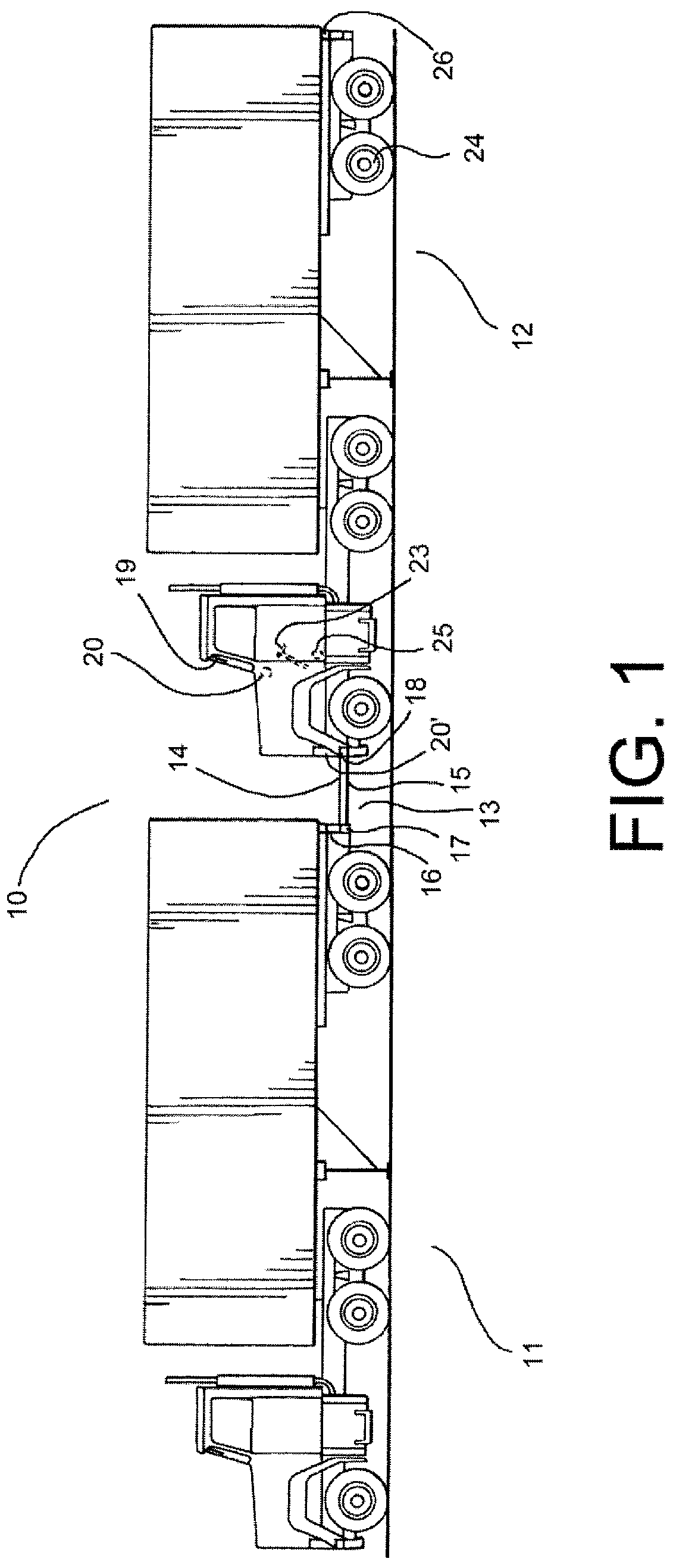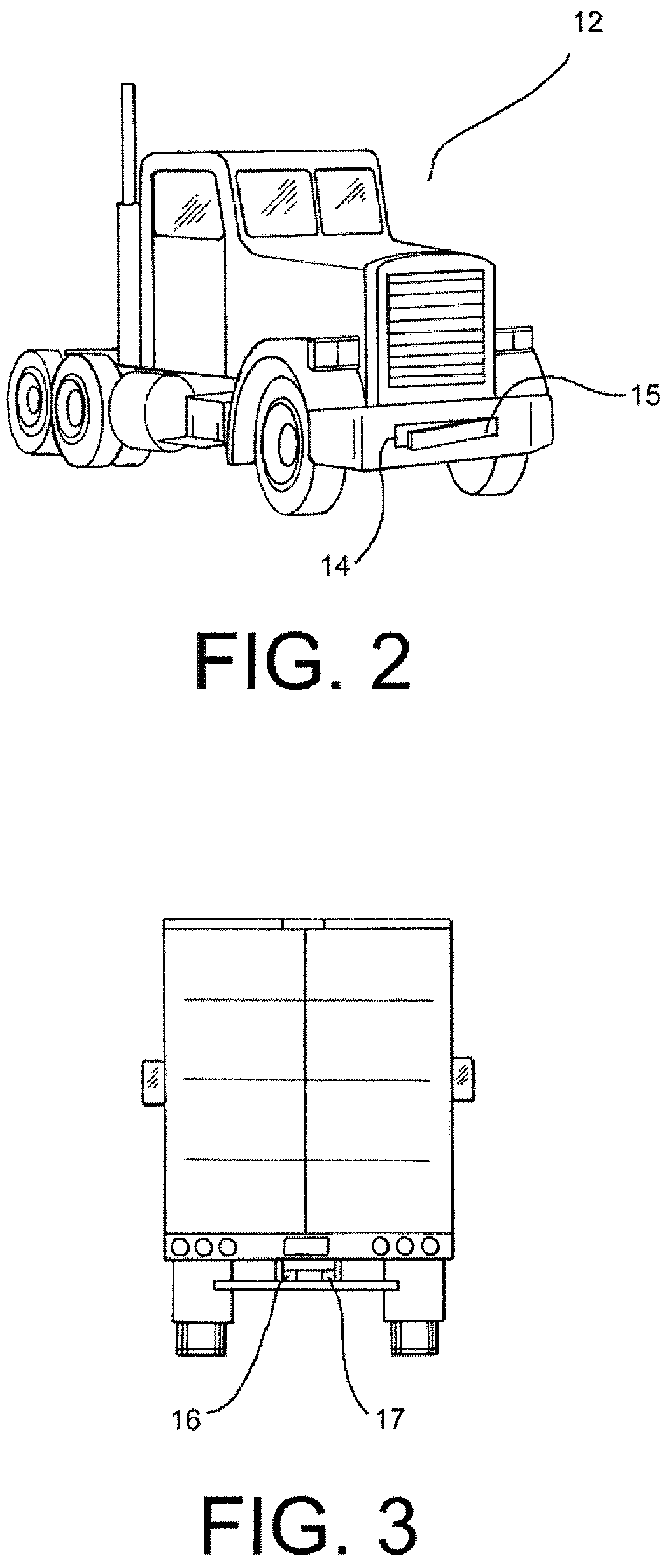Methods for Linking Motor Vehicles to Reduce Aerodynamic Drag and Improve Fuel Economy
- Summary
- Abstract
- Description
- Claims
- Application Information
AI Technical Summary
Benefits of technology
Problems solved by technology
Method used
Image
Examples
Embodiment Construction
[0030]A system 10 for linking a leading vehicle 11 and a trailing vehicle 12 to reduce their collective aerodynamic drag is shown in FIG. 1. The system 10 may include a dynamic linking assembly 13 that comprises an active member 14 having an arm 15 positioned on the trailing vehicle 12, a passive member 16 having a receiving area 17 positioned on the leading vehicle 11, and a control unit 18 coupled to the active member 14 for monitoring and controlling the linking of the vehicles. In one embodiment, the arm 15 of the active member 14 may be extended, retracted, or otherwise positioned by the control unit 18. Although FIG. 1 illustrates the active member 14 as being positioned on the trailing vehicle 12 and the passive member 16 as being positioned on the leading vehicle 11, it is understood that they may also be positioned vice versa within the scope of this disclosure.
[0031]Although illustrated in FIG. 1 as “semis” or “tractor-trailer” trucks, the leading and trailing vehicles (11...
PUM
 Login to view more
Login to view more Abstract
Description
Claims
Application Information
 Login to view more
Login to view more - R&D Engineer
- R&D Manager
- IP Professional
- Industry Leading Data Capabilities
- Powerful AI technology
- Patent DNA Extraction
Browse by: Latest US Patents, China's latest patents, Technical Efficacy Thesaurus, Application Domain, Technology Topic.
© 2024 PatSnap. All rights reserved.Legal|Privacy policy|Modern Slavery Act Transparency Statement|Sitemap



